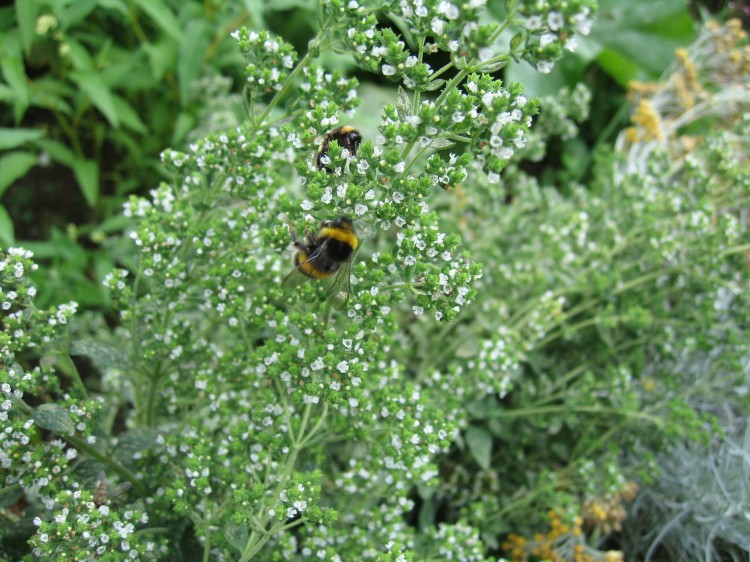I thought i would feature another herb that I have growing in the garden…. Marjoram
The Marjoram in the garden is covered from top to toe in flowers … and bees!
Marjoram is also known as Oregano. There are three main species
- Wild marjoram,
- Sweet marjoram (Oreganum majorana), and
- Pot marjoram (Oreganum onites).
Sweet marjoram tastes better, so use that in cooking.
There are many other cultivated varieties but their properties are similar.
The name, Oregano, comes from two Greek words – ‘oros’, which means mountain, and ‘ganos’ which means joy, or happiness.
Native habitat
- Europe
- Central Asia
- North America (where it has been naturalised)
It grows in hedgerows, dry pastures and scrub.
Growing conditions
- Likes a dry, lime-rich, chalky soil
- Prefers a sunny spot
Parts used
- Leaves
Properties
- Antiseptic
- Relaxing
- Tonic
Uses
Cooking
- Blends well with basil and thyme
- Flavours pizzas, sausages and tomato dishes
Medicinal
- Helps to relieve indigestion
- A tea made from marjoram helps you to sleep
- It eases coughs and colds
- Used as a gargle for sore throats
- Inhaling marjoram infused steam helps to clear catarrh
- An ointment made with marjoram eases aching and stiff muscles
- Good for baths and herbal pillows
History
- Romans used it in cooking
- Grown by monks for food flavouring and medicine
- Used in Medieval and Tudor times as a strewing herb
Folklore
- Ancient Greeks planted it on graves because they believed it brought joy to the dead.
- Romans thought it was a symbol of happiness and made crowns of it for couples at their weddings.
Information courtesy of The Herb Society
